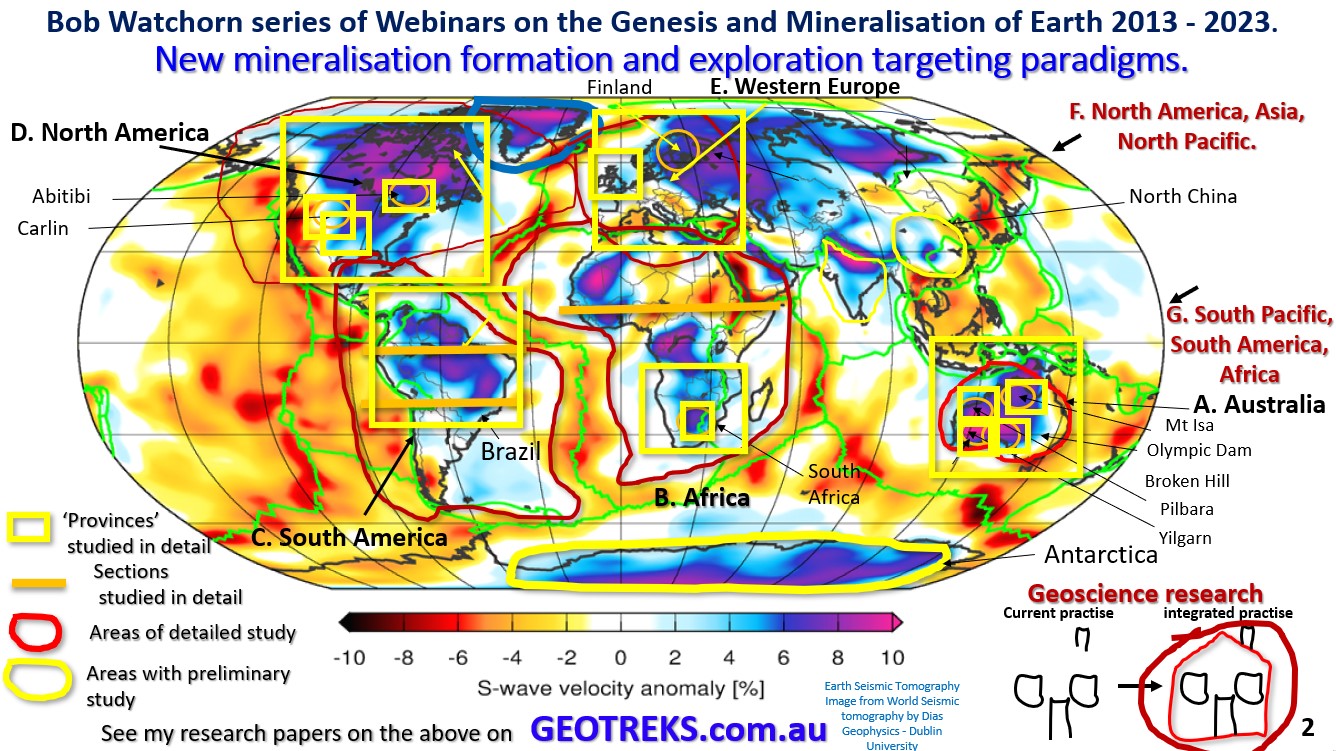Figure 2 above. Global mineralising systems and exploration targeting, research areas.
Note on content and style of the paper.
Most of this paper is a transcription from the video of the AusIMM Webinar at the Western Australian, South West Branch on the 1st June 2023. This is the link to the Webinar https://www.youtube.com/watch?v=bFurQYhWjyk
The language is thus vernacular and not geologese. This should make it more easily read and understood by most readers.
Additions have been made to expand and clarify sections that were abbreviated due to time constraints in the Webinar. References shown in the webinar, as well as background papers referenced but not quoted in the webinar, are shown as number links in the text which link to the references section at the end of the paper. This is less obtrusive than bracketed references in the text.
1. Content of paper.
This webinar continues from the Webinar on New Earth Evolution paradigms https://www.youtube.com/watch?v=snu8En442Js .
This research is about new global mineralisation and exploration targeting paradigms and can be accessed through https://www.youtube.com/watch?v=bFurQYhWjyk
I do not use the word paradigm lightly as there are many new concepts to assimilate during this webinar which should radically change the way you think about how Earth formed, how mineralisation formed and how we can optimally explore for it.
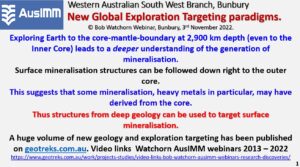
Research parameters
I have explored the earth, using all public domain data, but generally using seismic tomography plans and sections, down to the Inner Core but mainly to the Outer Core at 2,850 km depth. This has given a greater understanding of the structure of Earth because we can see structural geology at these depths for the first time.
I have followed the structures under some big mineralisation districts on the surface right down to the Outer Core. This suggests that some mineralisation, heavy metals in particular, may have been derived from the core.
The structures seen on seismic tomography, even at great depth, can be used to target surface mineralisation areas. Why and how could this be???
2. Global extent of Watchorn research.
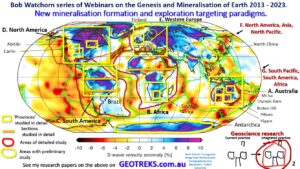
Figure 2 shows some of the areas I have examined with the EagleEye structural recognition system over the last 10 years. The boxes show the areas examined during this webinar.
WHY IS THIS WEBINAR IMPORTANT?
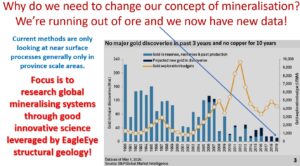
Saturday, 17 June 2023 — South Melbourne. Nickolai Hubble. Editor, The Daily Reckoning Australia states that to hit net zero globally by 2050, would require six times more mineral inputs in 2040 than today.
‘Which sectors do these increases come from? In climate-driven scenarios, mineral demand for use in EVs and battery storage is a major force, growing at least thirty times to 2040. Lithium sees the fastest growth, with demand growing by over 40 times in the SDS by 2040, followed by graphite, cobalt, and nickel (around 20–25 times). The expansion of electricity networks means that copper demand for grid lines more than doubles over the same period.’
- Lithium 4,200%.
- Graphite 2,500%.
- Cobalt 2,100%.
- Nickel 1,900%.
- Rare earths 700%.
Australia has the second-largest copper reserves and largest cobalt reserves, we are equal first for nickel, fifth largest for lithium and rare earths. Is this enough?
We need to change our concept of mineralisation? We now have new data that can radically change how we target minerals!
Most importantly we are running out of good grade ore that can be mined cheaply and at a time when we need huge supplies of ‘new’ minerals to ‘electrify’ the earth.
Current targeting methods only look at near surface processes and only in province scale areas at the most.
The proven structural recognition ability of EagleEye opens a new door to researching global mineralising systems by being able to use good structural geology as an additional targeting mechanism.
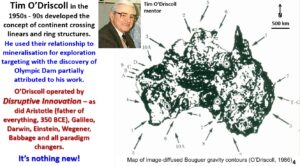
My mentor in the 1970s to 1990s, prior to this research, was Tim Driscoll who from the 1950s to 1990s developed the concept of continent crossing Linears and Ring Structures.
He used their relationship to mineralisation for exploration targeting with the discovery of Olympic Dam partly attributed to his pioneering work.
O’Driscoll operated by disruptive innovation!
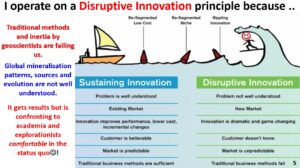
We need it because we are about to enter an unprecedented DEMAND for minerals and fuels which we cannot supply if we continue to use the current inadequate mineralisation models and targeting regimes.
I operate by the disruptive innovation principle because traditional methods, and inertia by academia and the geoscience industry, are failing us.
Global mineralisation patterns sources and evolution are not well understood.
Disruptive innovation gets results but it is very confronting to academia and explorationists comfortable in the status quo.
Happy disrupting!!
Bob

